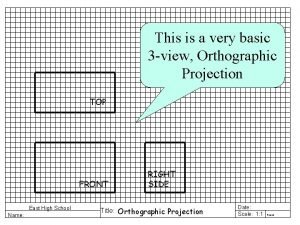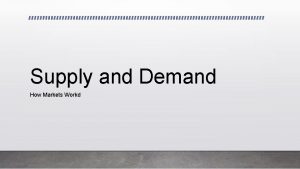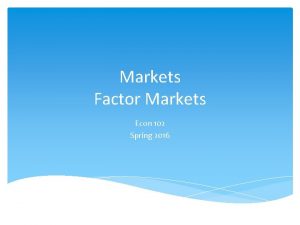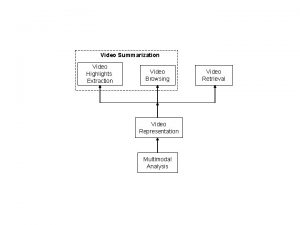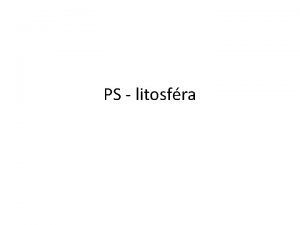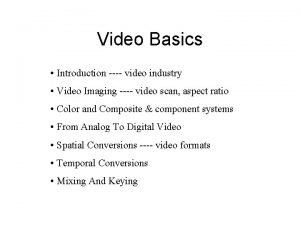FACTOR DEMAND FACTOR MARKETS VIDEO SERIES Carefully view






















- Slides: 22

FACTOR DEMAND

FACTOR MARKETS VIDEO SERIES Carefully view each of these ACDCL videos prior to viewing this powerpoint: �https: //www. youtube. com/watch? v=Y 2 Z 9 r 4 PKw. I 8 &list=PL 50 F 9 C 4 FD 0 BE 8 FE 28

Factors of production �Prices for the FOPs help firms to decided HOW to product their good/service. If fast-food workers gain raises, ceteris paribus, it would be reasonable to expect firms to adjust the mix of FOPs to substitute more capital for labor, in future expansion.

1. Factors need create more value than their cost �A firm will benefit from hiring a unit of labor (or any FOP), only if the value of their production is greater than the cost of employing the resource. �Price of the product x marginal product (of labor) = VMPL (value of marginal product to labor) � Price of the product is essential: the world’s most productive worker is useless to a firm, if they produce something that isn’t valued by consumers.

VMPL �Is the total monetary benefit of hiring a worker. �= P x MP Calculate MP & VMPL: Price = $2. Labor units Total Product Marginal Product 2 18 10 3 26 8 4 32 6 5 36 4 VMPL If the wage rate is $8, how many workers should be hired?

Maximizing Profits: how many workers? �If VMPL >= W the firm will hire �If VMPL < W the firm will not hire �If W = $8, the firm would hire 5 workers. The VMPL of the fifth worker is $8.

�VMPL is demand for labor (for this firm). A firm will adjust the quantity it demands when wages (prices) change.

What causes demand for labor to shift? �Only external variables impact supply & demand. Never prices/costs. Changes in the supply (price) of other factors: 1. 1. Land capital. An increase in supply of capital would increase labor MP, so increasing demand for labor. Changes in technology 2. 1. New tech boosts productivity among labor. Increasing demand for labor. Changes in the prices of goods produced by the firm. 3. 1. An increase in price for lemonade, will reduce a firms demand for labor.

2. Land & Capital Markets �The demand for land capital is ‘derived demand’, meaning it is based on the demand for the products created by these FOPs. �Firms maximize profit by hiring land/capital up to the point where the MP gained is equal to the factor price paid.

Rent = explicit cost of land/capital �Land supply relatively price inelastic �Capital supply more price elastic

Price inelastic supply of land

Relatively price elastic capital supply

Marginal Productivity Theory of Income Distribution: �Each factor is paid the value of output generated by the last unit of that factor. The last unit of capital, land or labor employed is paid a wage equal to the value of it’s marginal product.

3. Market for Labor �Why do people work: they want to consume. �Why do people spend time not working: leisure Preferences and cultural practices give rise to a labor supply. ? ? ? Would you work more if higher wages were paid? How much more?

Backward bending labor supply curve: Assumption: leisure is a ‘normal good’ (when income rises we want more of it) �When wages rise from w 1 to w 2, quantity of labor supplied rises. People will substitute more labor for what was leisure time. �When wages rise from w 2 to w 3, quantity supplied drops. The higher wage increases demands for more leisure time.

Individual Labor Supply

What shifts labor supply? �Changes in Preferences/norms: women & minorities ability to work. Cultural stances of thrift v consumerism, industry v. free-time 2. Population 3. Wealth: greater wealth will reduce supply 1.

4. FACTOR DEMAND in uncompetitive markets �Recall, imperfect competition means that firms have ability to set prices. Perfect competition is pricetaker. Price = MR (perf comp) Price > MR (imperect competition)

�In perfect competition, firms hire until the value of the marginal benefit = marginal cost of employing the resource. VMPL = P*MPlabor = Wage �The same is true in imperfect competition EXCEPT: the marginal benefit is not determined by price, but by MR. �To determine it’s demand for workers, the monopolist multiplies the MPlabor by the MR received from selling the additional output, called marginal revenue product of labor. �MRPL = MPL x MR

Imperfect Comp: Demand for labor would be smaller. �Since MR < P, �MRPl< VMPl �At any wage, perf Comp would demand Larger quantity labor


Imperfect Competition
 Video yandex b****
Video yandex b**** Yahoo gravity
Yahoo gravity Video search yahoo
Video search yahoo The frame size of a video refers to the video’s
The frame size of a video refers to the video’s Deterministic and stochastic inventory models
Deterministic and stochastic inventory models Measures to correct excess demand and deficient demand
Measures to correct excess demand and deficient demand Market demand curve
Market demand curve Dependent demand example
Dependent demand example Ito ay grapikong paglalarawan ng demand schedule
Ito ay grapikong paglalarawan ng demand schedule Independent and dependent demand
Independent and dependent demand Module 5 supply and demand introduction and demand
Module 5 supply and demand introduction and demand Methods of demand forecasting in managerial economics
Methods of demand forecasting in managerial economics Distinguish between individual demand and market demand
Distinguish between individual demand and market demand Dependent and independent demand in inventory management
Dependent and independent demand in inventory management Maclaurin series vs taylor series
Maclaurin series vs taylor series Heisenberg 1925 paper
Heisenberg 1925 paper Serie de taylor
Serie de taylor Maclaurin polynomial
Maclaurin polynomial Ibm p series servers
Ibm p series servers Voltage shunt feedback amplifier theory
Voltage shunt feedback amplifier theory Series aiding and series opposing
Series aiding and series opposing Arithmetic sequence formula
Arithmetic sequence formula The top view is directly above the front view
The top view is directly above the front view






















